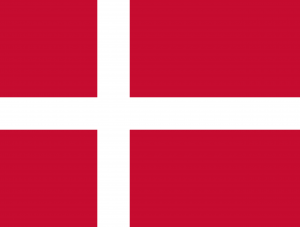Language/Danish/Culture/Literature
As a Danish language teacher, I believe that understanding a country's literature is key to truly comprehending its culture. In this lesson, we will learn about some of the most famous Danish writers and literary movements that have shaped Danish culture.
Consider exploring these related pages after completing this lesson: Architecture & Religion.
Danish Writers
Danish literature has a rich history, and many Danish writers have gained international acclaim. Here are just a few of the most famous Danish writers:
Hans Christian Andersen (1805-1875)
Hans Christian Andersen is perhaps the most well-known Danish writer. His fairy tales, which include classics such as "The Little Mermaid", "The Ugly Duckling", and "The Emperor's New Clothes", have been translated into more than 125 languages and continue to be enjoyed by people of all ages around the world.
Søren Kierkegaard (1813-1855)
Søren Kierkegaard is often considered to be the first existential philosopher. His writings, which explore the subjects of individualism, faith, and the nature of existence, had a profound impact on modern philosophy and literature.
Karen Blixen (1885-1962)
Karen Blixen, who wrote under the pen name Isak Dinesen, is best known for her autobiographical book "Out of Africa", which recounts her experiences living on a coffee plantation in Kenya. Her other works, which include short stories, essays, and novels, often explore themes of love, loss, and the human condition.
Peter Høeg (born 1957)
Peter Høeg is a contemporary Danish author whose novel "Miss Smilla's Feeling for Snow" became an international bestseller. His other works often deal with themes of identity, power, and the relationship between individuals and society.
Literary Movements
Danish literature has seen the rise and fall of various literary movements. Here are a few of the most important ones:
Romanticism (1800-1850)
The Romantic era in Denmark, which coincided with a period of national awakening, was characterized by a focus on emotion, individualism, and the beauty of nature. Hans Christian Andersen is often associated with Romanticism.
Modern Breakthrough (1870-1890)
The Modern Breakthrough was a literary movement that sought to modernize Danish literature and break away from the dominance of traditional, Romantic-style literature. Key writers of this movement include Georg Brandes, who championed the works of Henrik Ibsen and other foreign writers, and Henrik Pontoppidan, who wrote about social issues and the challenges faced by ordinary people.
The Quiet Existentialists (1940s-1960s)
The Quiet Existentialists were a group of writers who were heavily influenced by the philosophy of Søren Kierkegaard. Their works often explored the search for meaning and existential themes such as anxiety and alienation. Key writers associated with this movement include Johannes V. Jensen and Tom Kristensen.
Conclusion
Danish literature offers a rich tapestry of ideas, themes, and styles that reflects the values and experiences of the Danish people. By reading the works of famous Danish writers and understanding the literary movements that have shaped Danish culture, learners of Danish can gain a deeper insight into the country and its people.
Well done on mastering this lesson! Don't miss these related pages to expand your knowledge: Media & Art and Culture.
Other Lessons
- Sports
- Film
- Art and Culture
- Music
- Religion
- General Customs and Traditions
- Denmark Timeline
- Danish Design
- Media
- Architecture
Sources
- Danish literature - Wikipedia
- An Introduction to Danish Culture: 9780786464012 ... - Amazon.com
- DANISH

